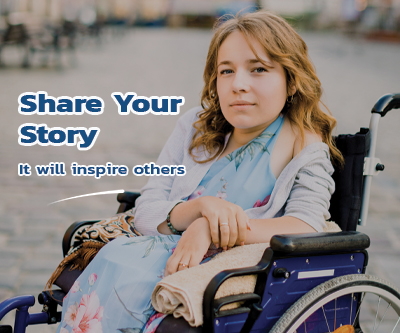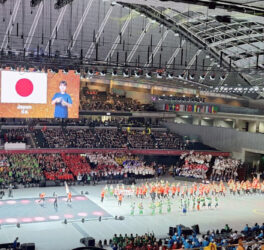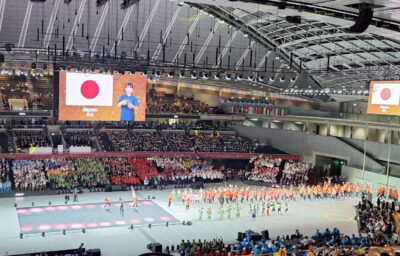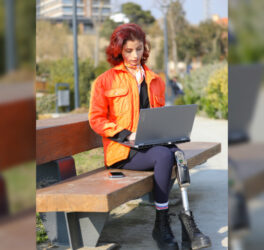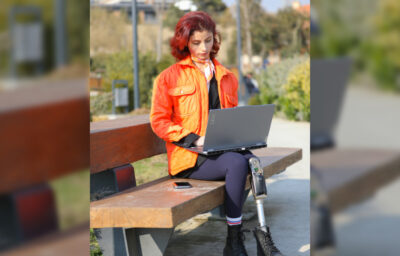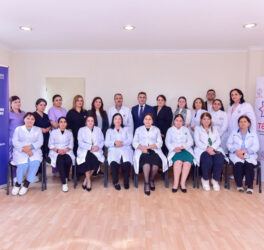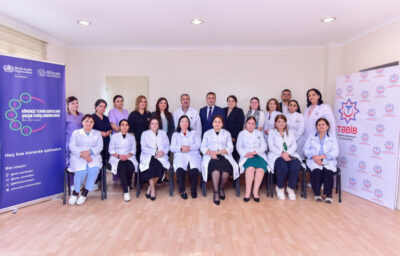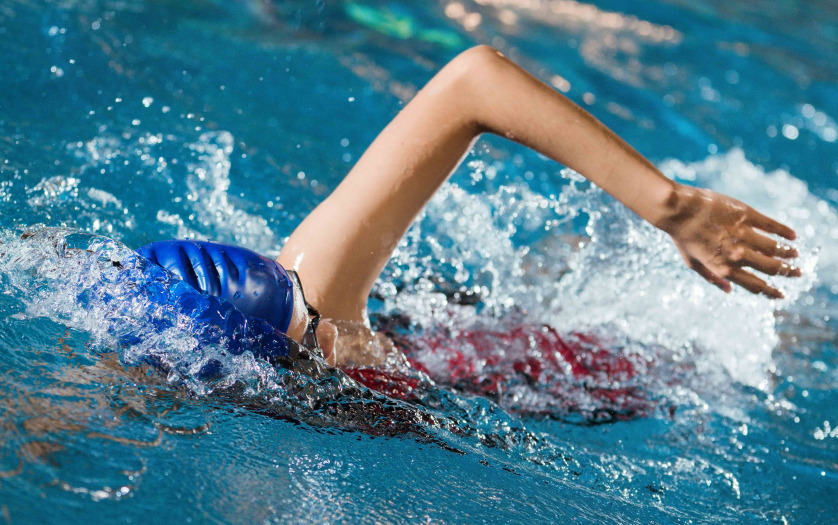
Since its invention in the 1980s, the ‘tapping method’ has been used to guide swimmers with vision disabilities in the pool.
This involves a coach or specially trained person warning a swimmer when they are close to the edge of the pool or when they need to turn by tapping them with a long foam-ended pole.
However, if a signal is given too early or late, it can lead to a swimmer being disqualified or injured.
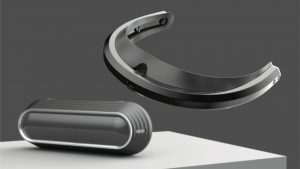 Final year product design student, Mirthe Hofstede has designed Optic – a navigation aid for swimmers with vision disabilities that allows them to navigate in the pool efficiently and safely.
Final year product design student, Mirthe Hofstede has designed Optic – a navigation aid for swimmers with vision disabilities that allows them to navigate in the pool efficiently and safely.
The product removes the need for a ‘tapper’, who is prone to human error, as Optic guides swimmers in real-time.
Using infrared beams and ultrasonic distance technology, Optic detects a swimmer’s distance away from the pool wall and whether they are swimming in the middle of the lane.
It is comprised of two sensor-containing components: a collapsible device that suctions to the pool wall, and a wearable device that attaches to a pair of goggles.
The sensors communicate information to the swimmer via the wearable device, which utilises bone conduction hearing (which transmits sound by vibrating bones near the temple).
It counts down how far away a swimmer is from touching the wall and instructs them on how to stay in the middle of the lane – an issue swimmers with vision disabilities face as they cannot see the black line at the bottom of the pool that helps swimmers with sight stay in position.
Of the inspiration behind Optic, Mirthe said: “I used to be a competitive swimmer. I trained in Malaysia and competed in national competitions in both Malaysia and the Netherlands and swam at the World Cup in Holland in 2013 at age 15.
“Swimming is an area where I have a lot of base knowledge and it’s a passion of mine.
“When I came across visually impaired swimming in my research, I was surprised to find out that swimmers with vision disabilities have a high risk of injury as well as no consistent navigation method which is used in both training and competition. I, therefore, set myself the task of solving this problem.”
Mirthe created the product based on feedback shared by swimmers with vision disabilities and coaches.
She has prototyped a visual and electronic version of Optic, and has found the infrared, ultrasonic, and bone conduction hearing technology operates accurately in a pool environment and gives swimmers detailed feedback.
Now Mirthe hopes to further develop the product through user testing with swimmers, trainers, and competition staff.
Of her ultimate goal, Mirthe said: “I hope to one day see Optic being used in both training and competition environments in the future.
“By making Optic available to all swimmers, swimming competition rules can be changed and make Optic a necessary piece of racing equipment for visually impaired swimmers.
“I want to reduce the level of stress visually impaired swimmers and their coaches currently feel throughout their swimming experience.
“Optic will give visually impaired swimmers the confidence to push their bodies to the very limit in competition and training without the uncertainty of not knowing where they are.”
Mirthe is showcasing Optic as part of the Degree Show 2021. For more information on the Show, visit the dedicated webpage here.
